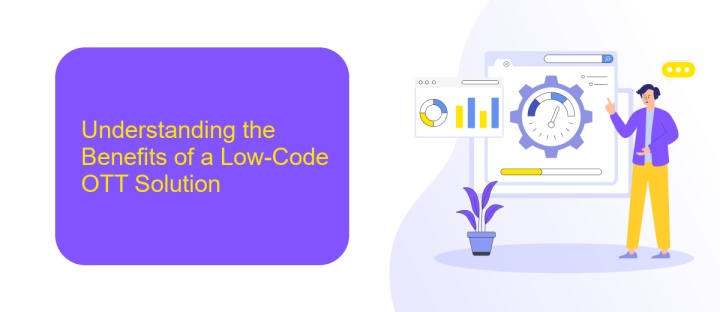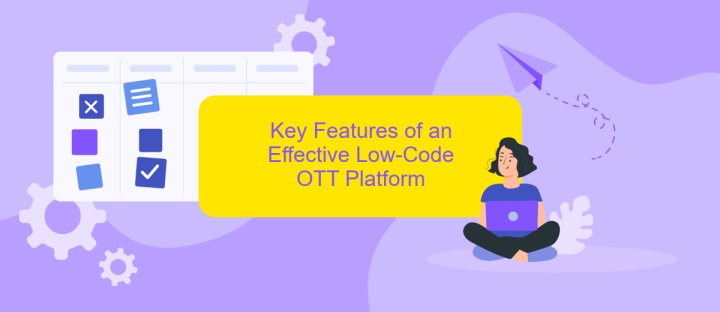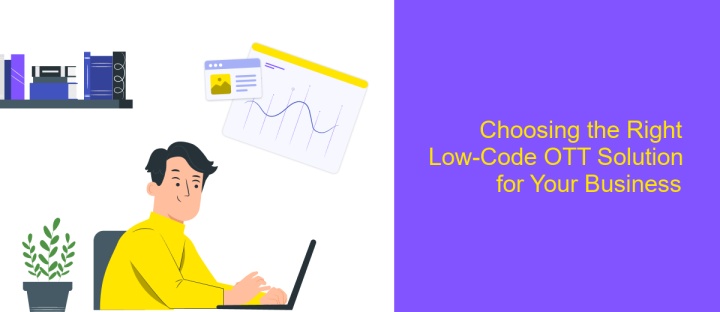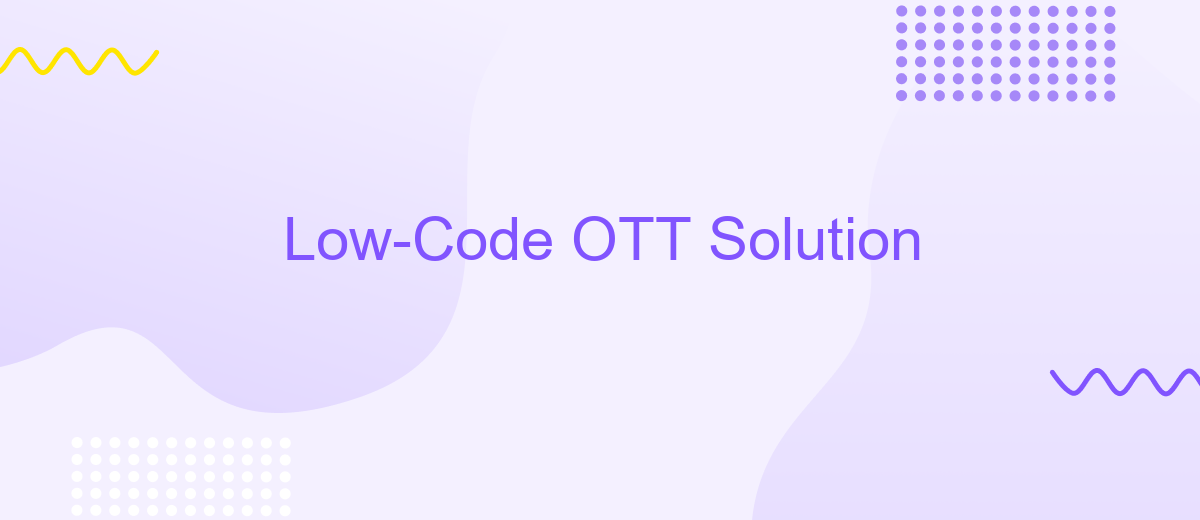Low-Code OTT Solution
In today's fast-evolving digital landscape, Over-The-Top (OTT) platforms are revolutionizing how content is delivered and consumed. However, developing and maintaining a robust OTT solution can be complex and resource-intensive. Enter low-code OTT solutions: a game-changer for businesses seeking to streamline development processes, reduce costs, and accelerate time-to-market, all while delivering a seamless and customizable viewing experience to their audience.
Introduction: The Rise of Low-Code and the OTT Revolution
The digital landscape is rapidly evolving, with Over-The-Top (OTT) platforms reshaping how content is consumed. As demand for personalized and interactive experiences grows, businesses seek agile solutions to keep pace. Enter low-code development: a revolutionary approach that empowers organizations to create robust OTT platforms with minimal coding expertise. This paradigm shift not only accelerates deployment but also democratizes innovation, allowing diverse teams to contribute to the development process.
- Low-code platforms reduce time-to-market by streamlining development processes.
- They enable non-technical users to participate in app creation, fostering creativity.
- Low-code solutions offer scalability, adapting to the dynamic needs of OTT services.
As the OTT industry continues to expand, the integration of low-code solutions becomes increasingly vital. These platforms allow companies to swiftly respond to market trends and customer preferences, ensuring they remain competitive. By simplifying the development process, low-code solutions not only reduce costs but also enhance flexibility, enabling businesses to focus on delivering high-quality content and engaging user experiences. The convergence of low-code and OTT is not just a trend; it is a strategic evolution in digital content delivery.
Understanding the Benefits of a Low-Code OTT Solution

Adopting a low-code OTT solution offers numerous advantages for businesses looking to streamline their digital media operations. One of the primary benefits is the significant reduction in development time. With intuitive drag-and-drop interfaces, businesses can quickly design and deploy OTT applications without extensive coding knowledge. This approach not only accelerates the time-to-market but also reduces the reliance on specialized IT personnel, enabling companies to allocate resources more efficiently.
Another key advantage is the ease of integration with existing systems. Low-code platforms often come equipped with pre-built connectors and APIs, facilitating seamless integration with various third-party services. For instance, using a service like ApiX-Drive, businesses can effortlessly connect their OTT platforms with CRM systems, analytics tools, and more, ensuring a cohesive ecosystem. This flexibility allows for rapid adaptation to market demands and enhances the overall user experience, positioning businesses to stay competitive in the fast-evolving digital landscape.
Key Features of an Effective Low-Code OTT Platform

In the rapidly evolving digital landscape, a robust Low-Code OTT platform is essential for delivering seamless streaming experiences. By leveraging low-code technology, businesses can accelerate the deployment of over-the-top (OTT) solutions, ensuring flexibility and scalability.
- Customizable User Interface: A user-friendly interface that can be easily tailored to match brand aesthetics without extensive coding.
- Seamless Integration: The ability to effortlessly integrate with existing systems and third-party services to enhance functionality.
- Scalability: Support for growing user bases and increased content demand without compromising performance.
- Advanced Analytics: Comprehensive analytics tools to monitor user engagement and optimize content delivery strategies.
- Multi-Platform Support: Compatibility across various devices and operating systems to reach a broader audience.
These features empower organizations to craft personalized OTT experiences efficiently. By adopting a low-code approach, companies can focus on strategic growth and content innovation, rather than getting bogged down by technical complexities. This adaptability not only reduces time-to-market but also enhances the overall viewer experience, setting the stage for future advancements in OTT technology.
Choosing the Right Low-Code OTT Solution for Your Business

When selecting a low-code OTT solution for your business, it's essential to consider factors that align with your strategic objectives and operational needs. A well-chosen platform can streamline your content delivery, enhance user experience, and reduce time-to-market.
Begin by assessing your specific requirements, such as scalability, integration capabilities, and user interface customization. Understanding these needs will guide you in identifying a solution that offers the right balance of flexibility and functionality.
- Evaluate the platform's scalability to ensure it can grow with your audience.
- Check for seamless integration with existing systems and third-party services.
- Consider the level of customization available for user interfaces and workflows.
- Review the platform's security features to protect your content and user data.
- Explore the support and resources provided by the vendor for a smooth implementation.
Ultimately, the right low-code OTT solution should empower your business to deliver compelling content efficiently while adapting to future technological advancements and market demands. By carefully evaluating your options, you can choose a platform that not only meets your current needs but also supports long-term growth.
Future of Low-Code in the OTT Landscape
The future of low-code development in the OTT landscape is poised for significant growth, driven by the increasing demand for rapid deployment and customization of streaming services. As content providers seek to differentiate themselves in a competitive market, low-code platforms offer a streamlined approach to developing and launching OTT applications. These platforms enable developers to create user-friendly interfaces and integrate complex functionalities without extensive coding knowledge, reducing time-to-market and development costs. This democratization of app development empowers smaller players to compete with industry giants, fostering innovation and diversity in content offerings.
Moreover, the integration capabilities of low-code solutions are set to transform how OTT services operate. Services like ApiX-Drive facilitate seamless connectivity between various applications and platforms, allowing for efficient data exchange and process automation. This enhances the overall user experience by ensuring smooth operation and integration of new features. As the OTT industry continues to evolve, low-code solutions will play a crucial role in enabling agile responses to market trends and consumer demands, paving the way for a more dynamic and responsive entertainment ecosystem.
FAQ
What is a Low-Code OTT Solution?
How does a Low-Code OTT Solution benefit my business?
Can I integrate third-party services with a Low-Code OTT Solution?
Is a Low-Code OTT Solution secure?
How scalable is a Low-Code OTT Solution?
Apix-Drive will help optimize business processes, save you from a lot of routine tasks and unnecessary costs for automation, attracting additional specialists. Try setting up a free test connection with ApiX-Drive and see for yourself. Now you have to think about where to invest the freed time and money!

